
Flanders is the Dutch-speaking northern portion of Belgium and one of the communities, regions and language areas of Belgium. However, there are several overlapping definitions, including ones related to culture, language, politics, and history, and sometimes involving neighbouring countries. The demonym associated with Flanders is Fleming, while the corresponding adjective is Flemish, which can also refer to the collective of Dutch dialects spoken in that area. The official capital of Flanders is the City of Brussels, although the Brussels-Capital Region that includes it has an independent regional government. The powers of the government of Flanders consist, among others, of economic affairs in the Flemish Region and the community aspects of Flanders life in Brussels, such as Flemish culture and education.

Dunkirk is a commune in the department of Nord in northern France. It lies 10 kilometres (6.2 mi) from the Belgian border. It has the third-largest French harbour. The population of the commune in 2019 was 86,279.

West Flanders is the westernmost province of the Flemish Region, in Belgium. It is the only coastal Belgian province, facing the North Sea to the northwest. It has land borders with the Dutch province of Zeeland to the northeast, the Flemish province of East Flanders to the east, the Walloon province of Hainaut in the south and the French department of Nord to the west. Its capital is Bruges (Brugge). Other important cities are Kortrijk in the south and Ostend (Oostende) on the coast, Roeselare and Ypres (Ieper). The province has an area of 3,197 km2 (1,234 sq mi) which is divided into eight administrative districts (arrondissementen) containing 64 municipalities. As of January 2019, West Flanders has a population of 1,195,796.
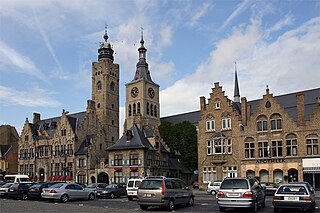
Diksmuide is a Belgian city and municipality in the Flemish province of West Flanders. The municipality comprises the city of Diksmuide proper and the former communes of Beerst, Esen, Kaaskerke, Keiem, Lampernisse, Leke, Nieuwkapelle, Oostkerke, Oudekapelle, Pervijze, Sint-Jacobs-Kapelle, Stuivekenskerke, Vladslo and Woumen.

Koekelare is a municipality located in the Belgian province of West Flanders. The municipality comprises the towns of Bovekerke, Koekelare proper and Zande. On 1 January 2006 Koekelare had a total population of 8,291. The total area is 39.19 km² which gives a population density of 212 inhabitants per km².

Nieuwpoort is a city and municipality located in Flanders, one of the three regions of Belgium, in the province of West Flanders. The municipality comprises the town of Nieuwpoort proper, as well as Ramskapelle and Sint-Joris. On 1 January 2008, Nieuwpoort had a total population of 11,062. Its land area is 31.00 km² which gives a population density of 350 inhabitants per km². The current mayor of Nieuwpoort is Geert Vanden Broucke (CD&V)
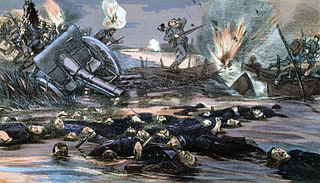
The Battle of the Yser was a battle of the First World War that took place in October 1914 between the towns of Nieuwpoort and Diksmuide, along a 35 km (22 mi) stretch of the Yser River and the Yperlee Canal, in Belgium. The front line was held by a large Belgian force, which halted the German advance in a costly defensive battle.

The Yser Towers are a monument complex near the Yser river at Diksmuide, West Flanders in Belgium. The first tower was built in 1928–30 to commemorate the Belgian soldiers killed on the surrounding Yser Front during World War I and as a monument to Christian pacifism. However, it subsequently became an important political symbol for the Flemish Movement and was destroyed in 1946 as a result of its association with Flemish nationalist collaboration in German-occupied Belgium in World War II. The current tower was rebuilt alongside the remains of the original and copied its design. It was finished in 1965. It remains a site of political significance to Flemish nationalists and is the center for their annual Yser Pilgrimage (IJzerbedevaart).
The Ypres Salient, around Ypres, in Belgium, was the scene of several battles and a major part of the Western Front during World War I.
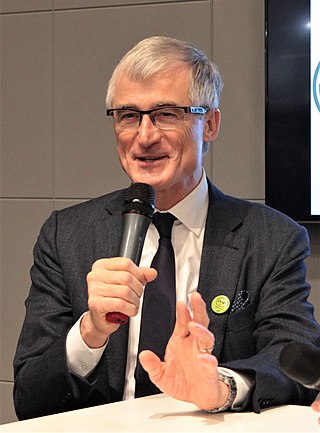
Geert Albert Bourgeois is a Belgian politician of the New Flemish Alliance (N-VA), which he founded in 2001, who is currently serving as a Member of the European Parliament since 2019. He previously served as the Minister-President of Flanders from 2014 to 2019. Prior to this, he was a member of the federal Chamber of Representatives for the People's Union from 1995 to 2001, and then for the N-VA from 2001 to 2004. He has been involved in local and regional politics in Flanders since 1976.
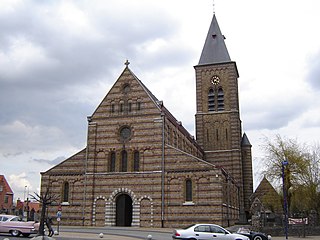
Passendale or Passchendaele is a rural Belgian village in the Zonnebeke municipality of West Flanders province. It is close to the town of Ypres, situated on the hill ridge separating the historical wetlands of the Yser and Leie valleys. It is also commonly known as a battlefield and the name of a campaign during World War I, the Battle of Passchendaele.
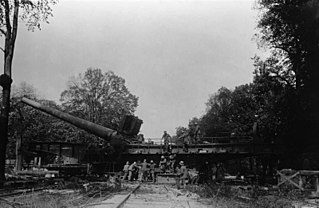
The 38 cm SK L/45 "Max", also called Langer Max was a German long-range, heavy siege and coast-defense gun used during World War I. Originally a naval gun, it was also adapted for land service when it became clear that some of the ships for which it was intended would be delayed and that it would be very useful on the Western Front.

Fort Napoleon in Ostend is a polygonal fort built in the Napoleonic era. It has recently been restored and is open to the public.

The history of Belgium in World War I traces Belgium's role between the German invasion in 1914, through the continued military resistance and occupation of the territory by German forces to the armistice in 1918, as well as the role it played in the international war effort through its African colony and small force on the Eastern Front.

The De Broqueville government in Sainte-Adresse refers to two successive Belgian governments, led by Charles de Broqueville, which served as governments in exile during the German occupation of Belgium in World War I. They were based in Le Havre in northern France after October 1914. The first government, known as the First de Broqueville government, was a Catholic government which was elected in 1911 and continued until 1916, when it was joined by Socialists and Liberals expanding it into the Second de Broqueville government, which lasted until 1 June 1918. In November 1914, the vast majority of Belgian territory was under German occupation. The only portion of Belgium that remained controlled by the Kingdom of Belgium in exile was the strip of territory behind the Yser Front.

The Yser Front, sometimes termed the West Flemish Front in British writing, was a section of the Western Front during World War I held by Belgian troops from October 1914 until 1918. The front ran along the Yser river (IJzer) and Yser Canal (Ieperlee) in the far north-west of Belgium and defended a small strip of the country which remained unoccupied. The front was established following the Battle of the Yser in October 1914, when the Belgian army succeeded in stopping the German advance after months of retreat and remained largely static for the duration of the war.
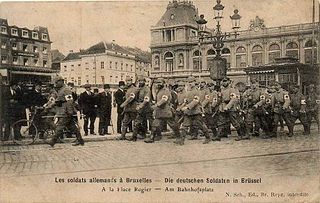
The German occupation of Belgium of World War I was a military occupation of Belgium by the forces of the German Empire between 1914 and 1918. Beginning in August 1914 with the invasion of neutral Belgium, the country was almost completely overrun by German troops before the winter of the same year as the Allied forces withdrew westwards. The Belgian government went into exile, while King Albert I and the Belgian Army continued to fight on a section of the Western Front. Under the German military, Belgium was divided into three separate administrative zones. The majority of the country fell within the General Government, a formal occupation administration ruled by a German general, while the others, closer to the front line, came under more repressive direct military rule.
Site Lange Max is a private domain, 3 km (1.9 mi) from the center of Koekelare, Belgium. The domain is located at 3 km (1.9 mi) from the Käthe Kollwitz Museum in Koekelare, 6 km (3.7 mi) from the Vladslo German war cemetery and 10 km (6.2 mi) from Diksmuide.
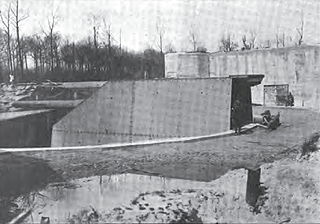
Batterie Pommern, also known as Lange Max, was the world's biggest gun in 1917, during World War I. The German gun was of type 38 cm SK L/45 "Max" and had a modified design by Krupp compared to earlier German 38 cm gun types. The modification allowed the gun to shoot from Koekelare to Dunkirk, which is about 50 km away.

The Homans Government (Regering-Homans) was the interim Flemish Government formed and sworn in on 2 July 2019, following the departure of Flemish Minister-President Geert Bourgeois who took up his seat in the European Parliament following the 2019 European Parliament election in Belgium. It was replaced by the Jambon Government on 2 October 2019.



























